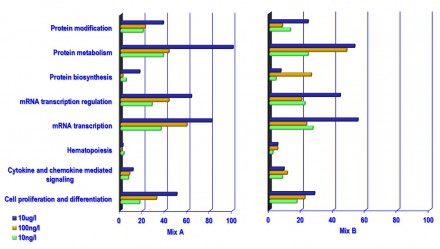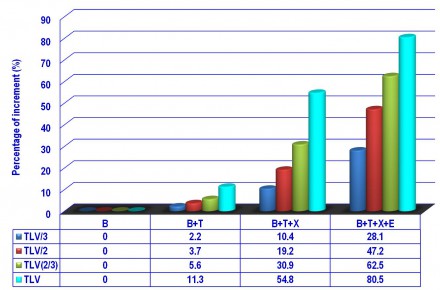The connectivity approach
The current paradigm for the assessment of the health risk of chemical substances focuses primarily on the effects of individual substances for determining the doses of toxicological concern in order to inform appropriately the regulatory process. These policy instruments place varying requirements on health and safety data of chemicals in the environment. REACH focuses on safety of individual substances; yet all the other facets of public health policy that relate to chemical stressors put emphasis on the effects of combined exposure to mixtures of chemical and physical agents. This emphasis brings about methodological problems linked to the complexity of the respective exposure pathways; the beyond than additive effect of mixtures, (the so-called ‘cocktail effect’); dose extrapolation, i.e. the extrapolation of the validity of dose-response data to dose ranges that extend beyond the levels used for the derivation of the original dose-response relationship; the integrated use of toxicity data across species (including human clinical, epidemiological and biomonitoring data); and inter-individual susceptibility variation associated to both genetic and environmental factors.
A possible way forward to overcome the current gaps in knowledge that could act as obstacles to the definition of a plausible regulatory approach to chemical mixture risk assessment would be to use a tiered approach as follows:
(a) Use dose addition to calculate a hazard index taking into account interactions as default option for hazard quantification and risk assessment.
(b) In data-rich situations use more sophisticated tools, including mechanistic, biology-based modeling that takes into account the biologically effective dose of the mixture components at the target tissues and incorporates system-wide response data across the dose-response range using information derived from –omics technologies – the connectivity approach.
The integrated methodology described above was applied to the estimation of public health risk of leukemia from co-exposure to a quaternary mixture of volatile organic chemicals (BTEX) commonly found in indoor and, to some extent, outdoor air.
The so-called BTEX mixture was chosen as a good model for studying the efficacy of, and refining, the multi-layer integrated approach outlined in this work since benzene has been accused of carcinogenic properties (especially in attacking the bone marrow resulting thus in leukemia) and neurotoxicity; The indoor air mixture characterizing indoor air in Europe according to the INDEX study was applied on lung epithelial cells (A549), at different doses over different periods of exposure (4 and 24 hours) and mixture composition.
Results showed modulation of several gene families and indicated a dose-response relationship (Figure 1). The extent of modulation was proportional to the time of exposure, and to the increase of the toluene:benzene ratio.
Figure 1. Gene modification under BTEX co-exposure
In terms of internal exposure, by employing the BTEX quaternary mixture PBPK/PD model. From the model it was found that the interaction effect (competitive inhibition) due to concurrent exposure can be better appreciated when the exposure levels are higher with respect to typical environmental exposures. This is the case for occupational exposure characterized by exposure levels of the same order of the Threshold Limit Value (TLV) for all the four substances composing the mixture.
Figure 2. Effect on internal dosimetry under various levels of BTEX co-exposure





